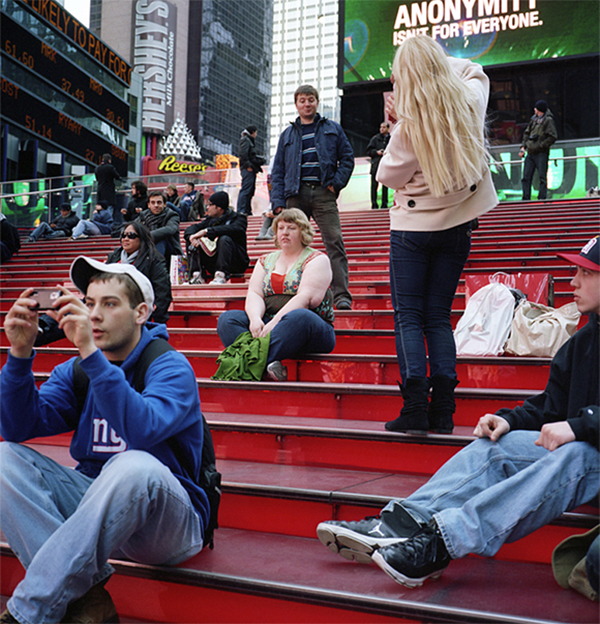Haley Morris-Cafiero is an artist, a photographer, and a scorned body. Aware that her appearance attracts disgust and mockery from some, she decided to try to document people’s public disdain. The result is a series of photographs exposing the people who judge and laugh at her. She chose to publish several at Salon:



Dmitriy T.C. was the last of many who have suggested I write about this. I’ve decided against it in the past because I anticipated a critique, one that dismissed the project on the argument that we can’t really know what is going through these people’s minds. Maybe that cop is just a jerk and he does that to everyone? Maybe the gawkers are looking at someone or something on the other side of her? Where’s the proof that these are actually instances of cruel, public anti-fat bias?
In some cases, Morris-Cafiero has a story to go along with the photo. The girl waiting to cross the street with her, she said, was slapping her stomach. In another instance, she overheard a man say “gorda,” fat woman. This type of context makes at least some of the photographs seem more legitimate.
But, as I’ve thought more about it, I actually think the project’s strength is in its ambiguity. The truth is that Morris-Cafiero often does not know what’s going on in the minds of her subjects. Yet, because she carries a body that she knows is disdained by many, it is perfectly reasonable for her to feel like every grimace, look of disgust, laugh, shared whisper, and instance of teasing is a negative reaction to her body. In fact, this is how many fat people experience being in public; whether they’re right about the intent 100 percent of the time is irrelevant to their lived experience.
And this is how people of color, people who speak English as a second language, disabled people, and others who are marginalized live, too. Was that person rude because I speak with an accent? Did that person say there was no vacancies in the apartment because I’m black? Was I not chosen for the job because I’m in a wheelchair? Privilege is being able to assume that the person laughing behind you is laughing at something or someone else, that the scowl on someone’s face is because they’re having a bad day, and that there must have been a better qualified candidate.
For many members of stigmatized groups, it can be hard not to at least consider the possibility that negative reactions and rejections are related to who they are. Morris-Cafiero’s project does a great job of showing what that looks like.
This post originally appeared on Sociological Images, a Pacific Standard partner site.




